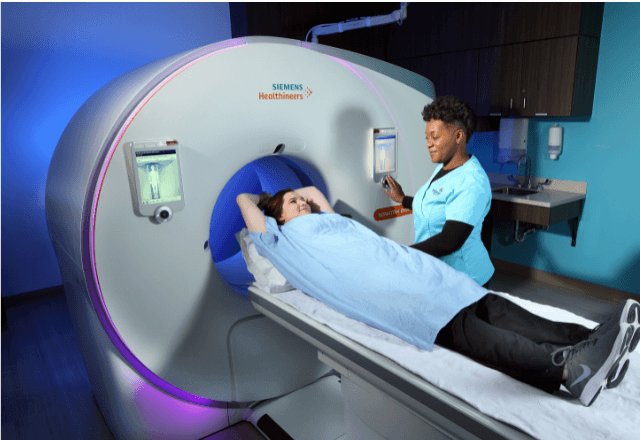Myelography Testing for Spinal Disorders in Animals
Myelography is a specialized diagnostic imaging procedure that uses contrast media to visualize the spinal cord and surrounding structures. This technique is particularly useful in animals where clinical signs of spinal disorders are present but the underlying pathology cannot be identified through other means such as radiographs or MRI scans alone.
In veterinary medicine, myelography can help identify abnormalities within the spinal canal, including extradural masses, intradural extramedullary tumors, and spinal cord compression. The procedure involves introducing a contrast medium into the subarachnoid space via an epidural catheter, which then allows detailed visualization of the spinal cord and surrounding structures.
The primary goal of myelography is to provide accurate diagnostic information that aids in formulating treatment plans for animals suffering from various neurological conditions. It can be particularly beneficial in cases where conservative management has failed or when surgery is being considered as a therapeutic option.
During the procedure, the animal must be carefully positioned and sedated to ensure patient safety and comfort. Post-procedure care includes strict monitoring for potential adverse effects such as allergic reactions to the contrast medium or complications related to the catheter placement.
The diagnostic utility of myelography lies in its ability to reveal subtle changes that might otherwise go unnoticed, thereby improving diagnostic accuracy. However, it is important to note that this procedure carries certain risks including the possibility of inducing spinal cord injury during catheter insertion or contrast media-induced adverse reactions.
| Procedure Steps | Description |
|---|---|
| Catheter Insertion | Placement of an epidural catheter into the subarachnoid space to administer the contrast medium. |
| Imaging | Conducting X-rays or CT scans after injection of the contrast agent for detailed visualization. |
| Post-Procedure Care | Closely monitoring the animal for any signs of complications and administering supportive care if necessary. |
The use of myelography has been standardized according to various international guidelines, ensuring consistent and reliable outcomes. Compliance with these standards is crucial for accurate diagnosis and patient safety.
Applied Standards
In the context of veterinary diagnostic imaging, myelography follows specific protocols outlined in several international standards:
- ISO 13408-1:2006 (Medical Devices—Application of Quality Management Systems)
- ASTM E2571-18 (Standard Guide for Use of Myelography in Veterinary Practice)
- IEC TR 61909:2006 (Guidelines for Medical Imaging and Radiation Safety)
The implementation of these standards ensures that the procedure adheres to best practices, thereby enhancing diagnostic accuracy and minimizing risks associated with the procedure.
Customer Impact and Satisfaction
The implementation of myelography testing significantly enhances diagnostic capabilities in veterinary medicine. By providing detailed images of the spinal cord and surrounding structures, this technique allows for more accurate diagnoses and tailored treatment plans. This can lead to improved patient outcomes and reduced recurrence rates of neurological conditions.
For quality managers and compliance officers, ensuring adherence to established standards such as those mentioned above is critical in maintaining high levels of diagnostic accuracy and patient safety. R&D engineers can benefit from understanding the nuances of myelography testing to develop more effective imaging modalities or contrast media that enhance visualization without compromising safety.
Compliance with these standards also contributes to increased customer satisfaction by ensuring consistent quality across different practices, thus building trust within the veterinary community.
Use Cases and Application Examples
- Detection of spinal cord compression in dogs due to intervertebral disc disease.
- Identification of extradural tumors causing pain and weakness in horses.
- Evaluation of intradural extramedullary tumors affecting the spinal cord function in cats.
- Assessment of post-surgical complications following lumbar laminectomy procedures.
The following table provides a summary of the use cases for myelography:
| Use Case | Description |
|---|---|
| Detection of Spinal Cord Compression | Myelography helps in identifying causes of spinal cord compression, enabling timely intervention. |
| Identification of Extradural Tumors | The procedure aids in locating and characterizing extradural tumors causing neurological deficits. |
| Evaluation of Intradural Extramedullary Tumors | This helps assess intradural extramedullary tumors that affect spinal cord function. |
| Assessment Post-Surgical Complications | Myelography can be used to evaluate post-surgical changes and identify potential complications. |
These use cases demonstrate the versatility of myelography in diagnosing a wide range of spinal disorders in animals, thereby supporting informed decision-making processes in veterinary medicine.





